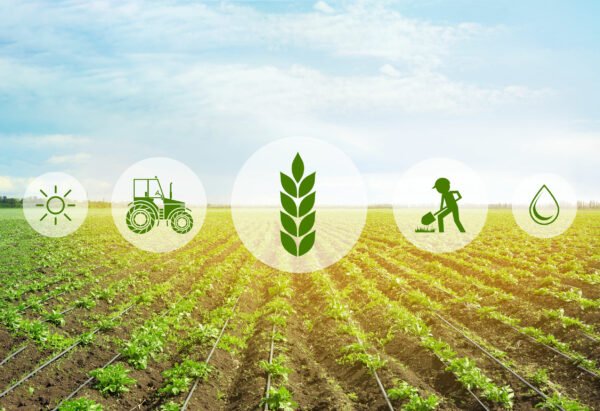These four sectors will drive India’s growth for the next 25 years

These four sectors will drive India’s growth for the next 25 years
India’s startup sector has had a historic year. In May this year, the nation acquired its 100th unicorn, bringing its total valuation to $332.7 billion. Since this celebration marks India’s 75th year of independence, it is considerably more noteworthy.
If you think about it, you could consider the birth of India’s independence as the beginning of a business. The nation’s citizens, who used a problem-solving strategy to win independence, laid the foundation for our national culture to innovate, be self-sufficient, and support the nation’s growth. This triumph sparked an entrepreneurial spirit that spread over the entire nation. And changes over its 75-year history have elevated India to the level of advanced economies.
Startups are now crucial for the expansion of the Indian economy and have been a substantial source of foreign direct investment (FDI) over the past few decades. Our strong startup community has sparked a wave of innovation and created jobs. The 100 Indian unicorns have raised over $90 billion in total and are valued at roughly $333 billion, according to Inc42’s research, “Decoding India’s 100 Unicorns.”
A sizable talent pool with an entrepreneurial spirit, the adoption of digital services, the use of digital payments, the prevalence of smartphones, and enhanced technological capabilities all played a part in this.
Giving credit where credit is due, one must recognise the Indian government’s initiatives to create an entrepreneurial environment and its role in aiding the development of early-stage firms.
Since its debut on January 16, 2016, the Startup India Initiative has recognised over 75,000 enterprises and provided tax benefits until August 2022. The Ministry of Electronics and Information Technology’s (MeitY) Startup Accelerators for Product Innovation, Development and Growth (SAMRIDH) Scheme is another option. It was created to support companies financially and increase investor and customer connections. The potential for success for prospective businesspeople is limitless when they have access to these resources.
So which sectors will see startups chart out the next frontier of growth and be the most major contributors to India’s GDP? Let’s look at the top 4:

1. Agritech
Agritech is applying technology and innovative technology to raise the productivity and effectiveness of agricultural activities. In other words, it is the use of technology to improve every aspect of farming and growing.
Agritech has many diverse applications across many agricultural and technological advancements. However, the aim of all these agritech innovations is the same—to produce more food in a given amount of land or with fewer inputs.
By automating operations and replacing much of the labour required in a farming operation—which is the input with the highest cost to a farming system—agritech saves farmers money and time.
India mainly depends on agriculture, contributing more than 15% of the GDP over the past three years. Since it is a key component of our economy, grassroots development must occur to maintain the momentum. As they work to integrate cutting-edge technologies into antiquated agricultural systems and create novel solutions to streamline the agriculture value chain and benefit farmers, agritech companies have emerged as a beacon of hope for Indian agriculture during the past few years.
An EY analysis estimates that the Indian agritech sector might grow to $24 billion by 2025. Thus, it is important to use this sector’s potential to advance India’s economic narrative.

2. Emerging technologies
Technologies that are growing into prominence from a backdrop of nonexistence or obscurity are those whose development, practical applications, or both, are still largely unreached. While some of these technologies are more established, most of them are recent. Emerging technologies are mostly seen as having the power to alter the status quo.
Radical originality (in the application, even if not in sources), rapid expansion, coherence, pronounced influence, uncertainty, and ambiguity are characteristics of emerging technologies. In other words, a definition of emerging technology is “a new and quickly developing technology that exhibits a degree of coherence that endures over time and has the potential to affect the socio-economic domain as seen in terms of the makeup of actors, institutions, and patterns of interactions among those, and the associated knowledge production processes. However, because its greatest influence won’t be felt for some time, the emerging phase is still a little vague and unknown.”
Emerging technologies cover many fields, including information technology, robotics, nanotechnology, biotechnology, and artificial intelligence.
The technological convergence of many systems evolving toward comparable aims may lead to the emergence of new technological sectors. Convergence combines previously independent technologies like voice (and telephony features), data (and productivity applications), and video to produce new efficiencies through resource sharing and interaction.
Converging technologies are formerly independent sectors that are in some way heading towards stronger interconnection and similar goals. Emerging technologies are those technical advancements that show progressive developments within a field for competitive advantage. However, opinions on the significance, relevance, and commercial viability of many emergent and convergent technologies vary.
The following important enabler to drive India’s GDP growth is reportedly Web 3.0. According to the FICCI-EY 2022 research, Web 3.0 and blockchain can increase India’s GDP by a startling $1.1 trillion by 2032. Any conversation’s top terms are NFTs, metaverse, and crypto assets. Even in the next 25 years, the potential of these digital assets is still huge, and their seamless integration into our daily lives makes the future even more exciting. The paradigm shift in the entertainment industry is another factor.
Compare a movie or video game from a few decades ago to one from now to see how the adoption of VFX technology and mixed reality has elevated the media and entertainment sector.

3. Fintech
Any company that modifies, enhances, or automates financial services for people or corporations is called a “fintech company.” Mobile banking, peer-to-peer payment systems like Venmo and CashApp, automated portfolio managers like Wealthfront and Betterment, and trading platforms like Robinhood are a few examples. It applies to the creation and exchange of cryptocurrencies (e.g., Bitcoin, Dogecoin, Ether).
History: Fintech may seem to be a fresh wave of technology innovations, but the idea itself has been around for a while. Since consumers no longer need to carry physical currency in their daily lives, thanks to the invention of early credit cards in the 1950s, they are considered to be the first fintech products made accessible to the general public.
The development of fintech led to the inclusion of bank mainframes and online stock trading platforms. One of the first fintech businesses to operate exclusively online, PayPal was established in 1998. Mobile technology, social media, and data encryption have further transformed this innovation. We now routinely use social media-hosted payment choices, blockchain networks, and mobile payment apps due to the fintech revolution.
How Does FinTech Work: Despite the fintech concept’s intricacy, it is possible to get a firm understanding. FinTech makes financial transactions easier for both individuals and businesses, boosting accessibility and frequently bringing down costs. It can be used by companies and services that use AI, big data, and encrypted blockchain technology to provide highly secure internal network transactions.
Fintech aims to remove procedures that can be superfluous for all parties engaged in the transaction process. You can send money to other persons at any time of day using a smartphone service like Venmo or CashApp and have it sent instantly to their chosen bank account. The recipient would need to go to the bank to deposit the funds if you choose to pay with cash or a cheque instead.
The importance of this industry to the world economy has grown quickly. From the quantity of paperwork done decades ago to the ease of online transactions—this industry has really shaped India’s modern history. Adopting digital financial services nationwide, including Kirana stores and street vendors, has facilitated economic parity. India has so far created 22 unicorns in the fintech industry, and OneCard recently became the country’s 104th overall.

4. Wellness
India has developed a demand for healthiness in recent years due to customers’ growing attention to efficient health and wellness products and a healthy lifestyle. Consumers today are more concerned with selecting the best goods and services and have started to pay more attention to holistic wellness and preventive healthcare. This sector is driven by the rising prevalence of chronic lifestyle diseases, stress, and other illnesses.
Still, the market is also growing due to the increasing number of innovative health and wellness-related product launches.
This sector has changed due to a paradigm shift in Indians’ attitudes about their health, emerging as a thriving industry. This movement has been fueled by people’s desire to improve their way of life, especially among Millenials who place a high value on their happiness and wellbeing. And if the present COVID-19 pandemic has taught society anything, it’s that people are beginning to understand the value of preventive healthcare and overall health and wellbeing.
Indians have been drawn to wellness solutions for a healthier lifestyle for millennia because they want to look and feel better physically and mentally. The need for alternative therapeutic modalities like Ayurveda, yoga, naturopathy, etc., helped this sector thrive. It slowly evolved into nutrition, fitness, preventative healthcare, and health tourism.
Lower- and middle-class customers may now spend more on their health and well-being thanks to the strengthening Indian economy. Additionally, the Indian government’s participation in encouraging major investors to invest in wellness under the flagship “Make in India” scheme and its decision to create the Ministry of AYUSH are signs that the nation’s health and wellness business is expanding.
High-end tech integrations and high investment levels have contributed to the meteoric expansion of the Indian wellness business. Many high-end yoga studios, wellness spas and retreats, mobile applications for personalised wellness, and other wellness trends, for instance, have changed how the sector was perceived and provided the main participants in the industry a much-needed boost.
Additionally, the appeal of health and wellness products has been disseminated across all demographics, largely thanks to social media marketing. According to a report by Numr Research, 33% of millennials spend more than Rs 4000 per month on their health and wellness.
The Indian health and wellness market is seeing growth in another sector, telemedicine, particularly in light of the ongoing epidemic. Developing communications technology has enabled thousands of people, including those from low-income groups, to obtain medical diagnoses and treatment remotely.
Fitness and nutrition, mainly in the health and wellness food and nutrition sector, are some of the health trends and wellness practices that will endure. Manufacturers are forced to adopt a customer-centric strategy since customers set the parameters for product development.
Dietary practices like low-carb, Keto, and intermittent fasting are some future trends that seem to be gaining attention these days with a focus on cleaner eating. Additionally, there is a rise in consumer-driven demand for food items that meet many lifestyle and dietary needs, like those associated with the ketogenic diet, diabetic-friendly snacks, fortified meals, cold-pressed juices, gluten-free goods, immunity-boosting foods, etc.
This tendency has been recognised by both new and existing businesses, which have both seen remarkable growth. According to Neilsen’s research, Indian customers now read food labels and are willing to pay more for goods that pass muster, particularly those that provide extra nutrients. They are devoted to well-known businesses and are brand conscious.
In particular, preventative measures and healthier eating habits seem to be the centrepiece of the focus, just as they should be, since the country is rapidly waking up to the importance of health and wellness.
As the birthplace of yoga, which has become the cornerstone of global physical, mental, and emotional wellbeing, India has long placed a premium on wellness. In the past 75 years, the concept of wellness has evolved beyond its traditional meaning to include mindfulness and societal welfare. This industry is flourishing, and wellness providers are adapting to the change by embracing technology to develop apps that give everyone access to tools for mental wellbeing.
Additionally, the launch of the International Day of Yoga and startup initiatives by the central government and programmes like AYUSH have fueled the growth. It will result in a more emotionally stable population over the next 25 years.
The inputs for these article has been taken by an article published by cnbctv18 by the author
Rajan Navani, He is Founder and CEO of JetSynthesys, a new-age digital entertainment and technology company. Views expressed herein are his own.
edited and proofread by nikita sharma




